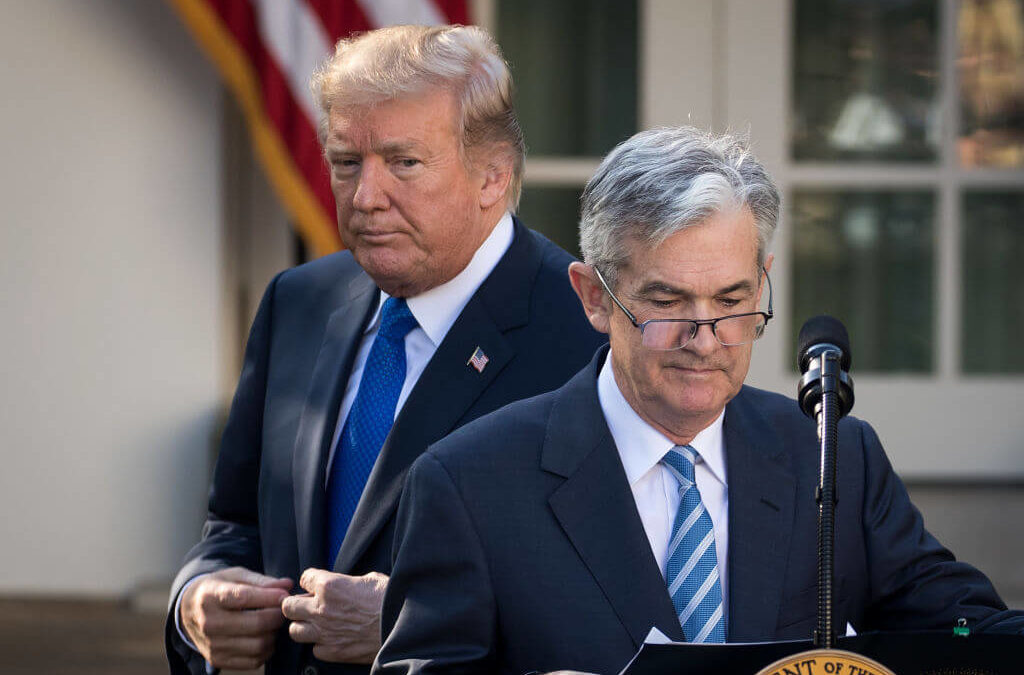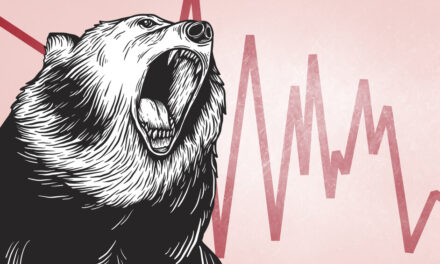The Federal Reserve is likely poised to raise its benchmark interest rate for the fourth time this year at a meeting Wednesday, once again drawing the ire of President Donald Trump.
“It is incredible that with a very strong dollar and virtually no inflation, the outside world blowing up around us, Paris is burning and China way down, the Fed is even considering yet another interest rate hike. Take the Victory!” Trump tweeted Monday morning.
It is incredible that with a very strong dollar and virtually no inflation, the outside world blowing up around us, Paris is burning and China way down, the Fed is even considering yet another interest rate hike. Take the Victory!
— Donald J. Trump (@realDonaldTrump) December 17, 2018
The president’s tweet comes on the heels of an op-ed in the Wall Street Journal on Sunday by billionaire hedge fund manager Stanley Druckenmiller and former Fed governor Kevin Warsh in which the pair said the Fed needs to hold off on further tightening.
The pair pointed to the global central-bank liquidity reversing on Oct. 1, when stocks began to crater from all-time highs in September, saying this is not a coincidence and the Fed should take note.
Per the WSJ:
In response to market tumult, the Fed governors recently hinted at less enthusiasm for rate increases next year. The new forward guidance is different from what they signaled in September. But it is no more reliable. The Fed should stop this option-limiting exercise entirely. And if data dependence is the Fed’s new mantra, it should actually incorporate recent data into its forthcoming policy decision.
The Fed’s balance sheet is where the money is. Yet it has provided little additional clarity on its balance-sheet plans since Chair Janet Yellen’s tenure. At a time of global quantitative tightening and uncertain economic prospects, the Fed’s silence on its asset holdings is contributing to the tumult. We were assured by policy makers that QE provided large benefits to the real economy. If so, won’t its reversal in the form of QT come with a cost? It can’t all be rainbows and unicorns.
In a first-best world, the Fed would have stopped QE in 2010. It might then have mitigated asset-price inflation, a government-debt explosion, a boom in covenant-free corporate debt, and unearned-wealth inequality. It might also have avoided sowing the seeds of future financial distress. Booms and busts take the Fed furthest from its policy objectives of stable prices and maximum sustainable employment.
In a second-best world, on Mr. Powell’s arrival in February 2018, the Fed would have shrunk its balance sheet with speed and determination before raising rates. The economic expansion was still gaining traction at home and abroad. Tax and regulatory reforms were jolting the supply side of the economy from its slumber. Accelerated Fed QT, in the absence of rate rises, would have been much less disruptive to the real economy. Asset prices could then have found a more durable equilibrium and laid a stronger foundation for future growth.
The time to be dovish was when the crisis struck and the economy needed extraordinary monetary accommodation. The time to be more hawkish was earlier in this decade, when the economic cycle had a long runway, the global economy ample momentum, and the future considerably more promise than peril.
This is a time for choosing. We believe the U.S. economy can sustain strong performance next year, but it can ill afford a major policy error, either from the Fed or the rest of the administration. Given recent economic and market developments, the Fed should cease—for now—its double-barreled blitz of higher interest rates and tighter liquidity.




